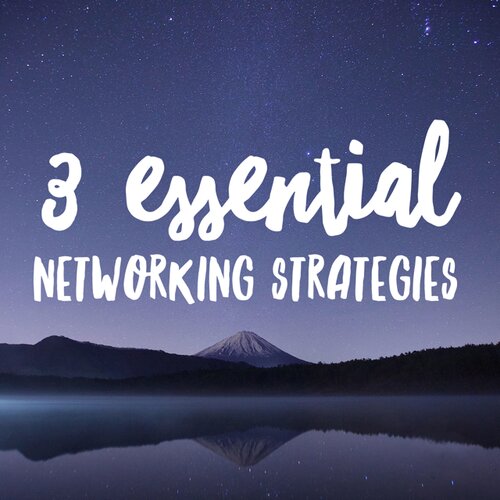by Carolyn Edlund
Are you taking advantage of meeting others who can help your small business? Here’s what artists must know to make networking activities more effective.

A recent post with 10 Tips for Effective Networking gave readers some basics on how to prepare for networking events and make the most out of attending them. The crucial work of making networking successful is done after the event. Here are several essential steps you must take to create networks for your business that work and last .
Make Following Up a Priority.
This is the most important step, but it is astonishing how many professionals and experienced business people do not follow up on their networking leads. Recently, I attended a small breakfast seminar hosted by some “experts” on effective networking practices. As an experiment, I didn’t follow up with anyone, but waited to hear from those who had attended the event. I only heard from one person, and that was after a week or two. The speaker never contacted me, nor did he respond to my eventual email. The lesson here is to “walk the walk”.
When you make a good contact for your art career (or any business), promptly email, call or write a note to follow up, and schedule a meeting if appropriate. Offer them something of value – an introduction to someone they may want to meet, an event coming up they may not know about, or to assure them that you understand what their business is, what they are looking for, and that you will be on the lookout for good contacts to refer. Be consistent in communicating with them so that they keep you “top of mind”. You will not make long-term connections with everybody, but if you are able to cultivate a couple of good reciprocal contacts from an event, you have done well.
Create Alliances.
This is actually something you will want to think about before you attend any networking event, and when you are following up as well. What types of businesses are complimentary to yours – where you do not compete, but appeal to the same type of customer and can recommend each other? As an artist, you may want to make an alliance with an Art Council director, a gallery owner, a show promoter, other artists or even non-art businesses who can refer you – and whom you can also help.
Business people do this all the time. For example, a financial planner may partner up with an attorney, and they will refer business to each other as appropriate, creating a larger client base for both of them. This also makes them more valuable in their clients’ eyes! Artists should be savvy to this and take advantage of the opportunity. Think creatively – who could be in a good alliance with you?
Establish Credibility.
Present yourself professionally from the very start of your business. Over time, people will come to know you as a resource. Do your homework in your particular field of endeavor, and keep up on developments. You don’t have to be a world’s expert on your subject to track events, trends and new information, and be valuable to others. Start an email subscription feature on your website, and contact subscribers with occasional newsletters with helpful information (not spam). They will come to know you as the “go-to” person in your specialty, and seek you out when they need your product or services. You can even go further and put on an event.
A framer I know has started a monthly women’s business networking lunch at a local restaurant, which is well-attended and growing. Everyone knows her, and when they need framing done, she is the one they call.
The key to using all of these essential networking strategies effectively is plan your activities to create a win-win situation for everyone involved. Help your contacts, help your subscriber base, help your clients, help your suppliers, and help your own business grow by taking it to the next level.


Speak Your Mind